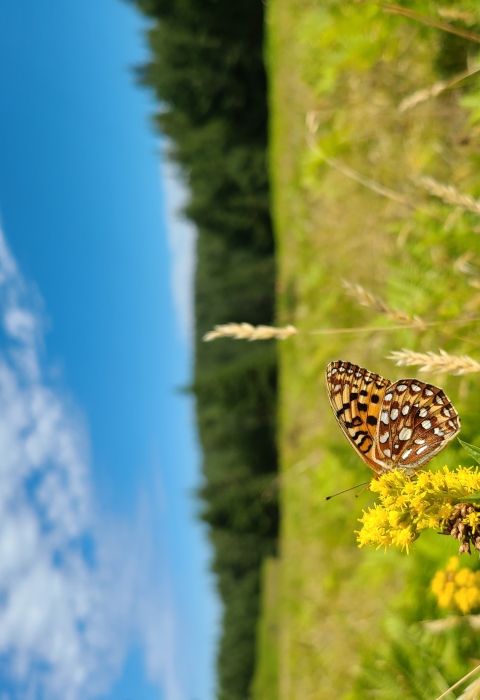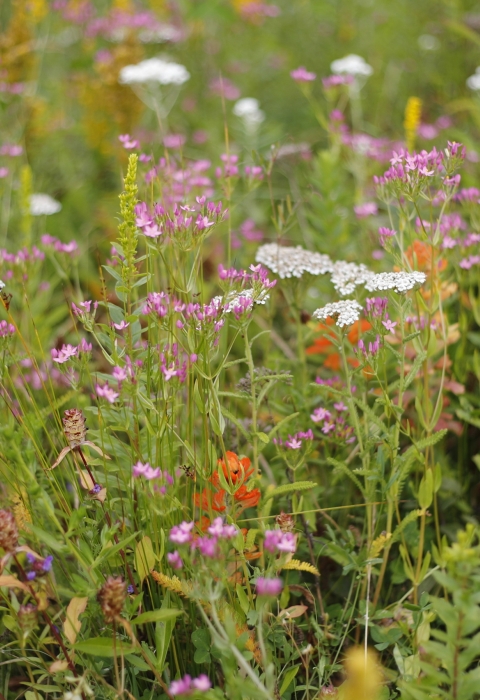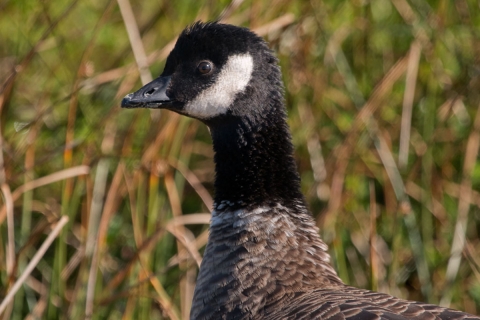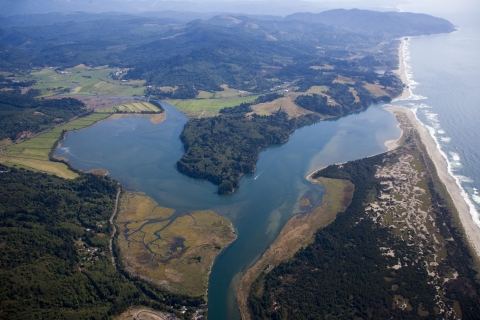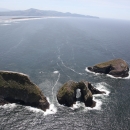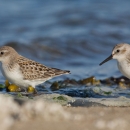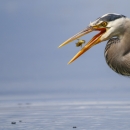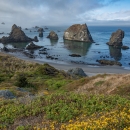About Us
At 1,202 acres, Nestucca Bay Refuge is the largest of the six Oregon Coastal Refuges. Located where the Nestucca and Little Nestucca Rivers converge and debouch into the Pacific, the Refuge is managed to provide wintering habitat for six subspecies of white-cheeked geese, including Aleutian Cackling and Dusky Canada Geese. The Refuge also hosts several species of dabbling ducks, shorebirds, raptors, songbirds, anadromous fish, sylvan and estuarine mammals, and a population of the threatened Oregon Silverspot Butterfly on its seven distinct habitat types. It's a great place to hike in the morning and have a picnic lunch at noon.
Our Mission
Established in 1991 to protect and enhance habitat for Dusky Canada Geese (a species of concern) and Aleutian Cackling Geese (formerly endangered), the refuge is wintering grounds for these and four other subspecies of white-cheeked geese. Nestucca Bay Refuge actively engages in pasture management cooperatively with local dairy farmers to offer prime habitat for geese during the winter.
The Refuge also features upland forest, coastal prairie, and tideland. Careful management of these habitats protects migratory waterfowl, songbirds, and threatened species like Coho Salmon and the Oregon Silverspot Butterfly.
Our History
Nestucca Bay National Wildlife Refuge was established in 1991 with the acquisition of 370 acres of short grass pastures along the Nestucca and Little Nestucca Rivers to provide wintering habitat for white-cheeked geese.
In 2000, the Refuge boundary was expanded by 375 acres to include Neskowin Marsh. This marsh is a rare coastal bog ecosystem with exceptional biological value. Marsh, bog, forested wetlands, and upland meadows form a habitat complex important to a diverse and abundant group of plant and animal species. Since establishment, additional tracts in and around Neskowin Marsh have been acquired. Neskowin Marsh is closed to recreation and visitation.
In 2007, an 83-acre tidal marsh restoration project was completed along the Little Nestucca River. The project constituted a 30% increase in tidal marsh habitat in the lower watershed. Primary partners on this project included Ducks Unlimited, Confederated Tribes of Siletz Indians, and the Oregon Coastal Program. The project benefits salmon, ducks, shorebirds and other species.
In 2009, the 76-acre Martella Tract was added to the refuge. Located along the Little Nestucca River it harbors Semidi Islands Aleutian Cackling Goose in winter. This addition to the refuge was made possible through the timely assistance of The Nature Conservancy who ensured protection of this irreplaceable wintering habitat for this special goose in perpetuity.
The Two Rivers Peninsula, acquired in 2013 in partnership with The Nature Conservancy, is located at the confluence of the Nestucca and Little Nestucca rivers. The area contains upland forest, estuarine shoreline, and tidelands. Wildlife using this area includes migratory songbirds, Bald Eagles, Peregrine Falcons, Bobcat, Black-tailed Deer, and many other species. Shoreline and tideland habitats are used by a variety of estuarine fish, including Coho and Chinook Salmon. The 200-acre peninsula now fully protects the area for wildlife and outdoor recreation. It's a great area to hike and view coastal prairie and mixed hardwood forest.
Currently, Nestucca Bay Refuge is continually improving habitat for wildlife through restoration efforts of the lowland pastures adjacent to the Little Nestucca River and of the coastal prairie habitats atop Cannery Hill. Both of these ongoing restoration projects benefit threatened species living on the refuge: Coho Salmon and the Oregon Silverspot Butterfly, respectively.
Other Facilities in this Complex
Nestucca Bay National Wildlife Refuge is managed as one of six Refuges in the Oregon Coast National Wildlife Refuge Complex. See below for the other five Refuges and experience them all.
Refuge Headquarters:
Oregon Coast National Wildlife Refuge Complex
2127 SE Marine Science Drive
Newport, OR 97365
541-867-4550
oregoncoast@fws.gov
What is a Refuge Complex?
A National Wildlife Refuge Complex is a group of two or more refuges, wildlife management areas or other refuge conservation areas that are managed from one central office. Refuges are grouped into a complex because they occur in a similar ecological region, such as a watershed or specific habitat type, and have a related purpose and management needs.
The Oregon Coast National Wildlife Refuge Complex is managed from our headquarters in Newport, Oregon. The office located at Bandon Marsh NWR serves as a south-coast field office.
